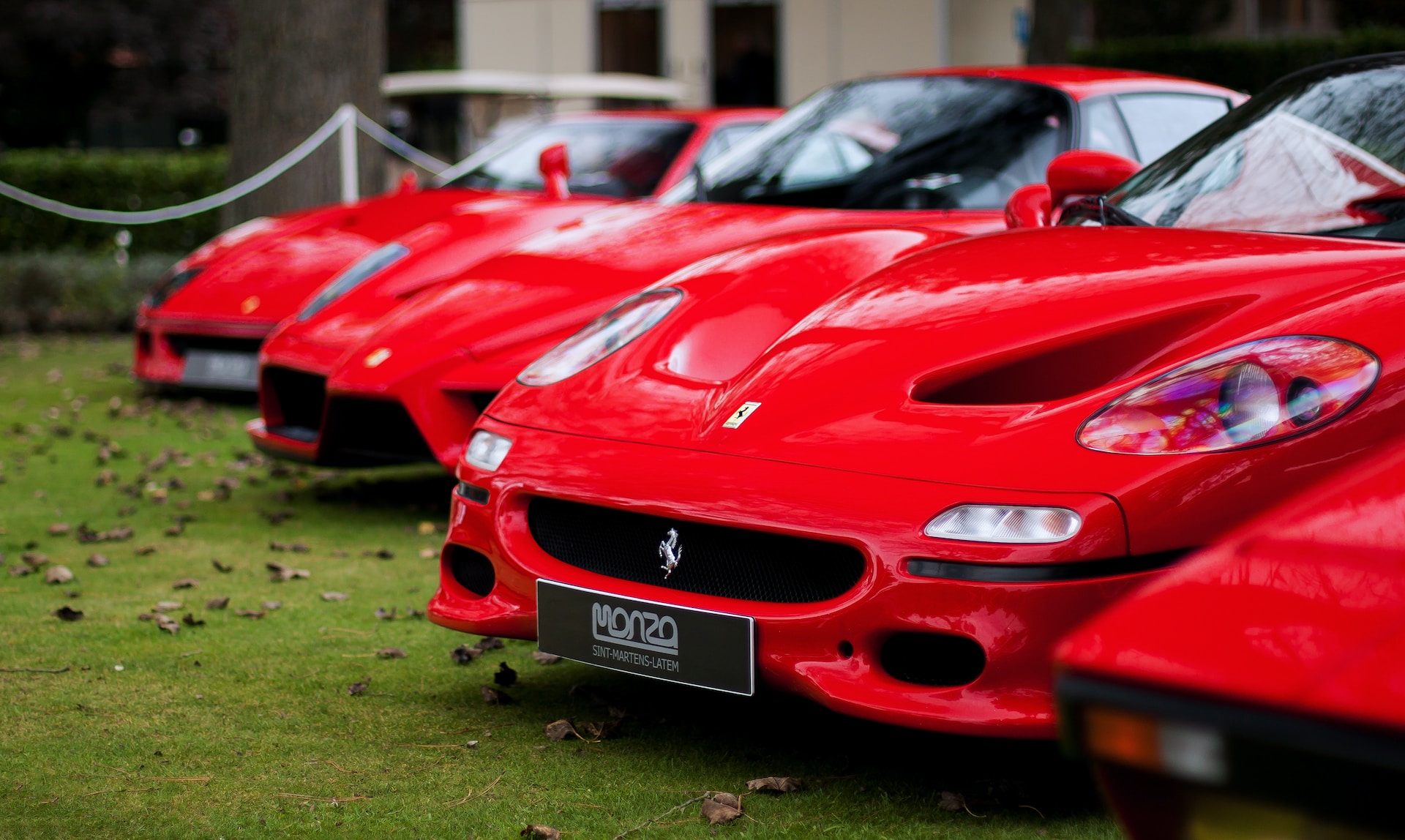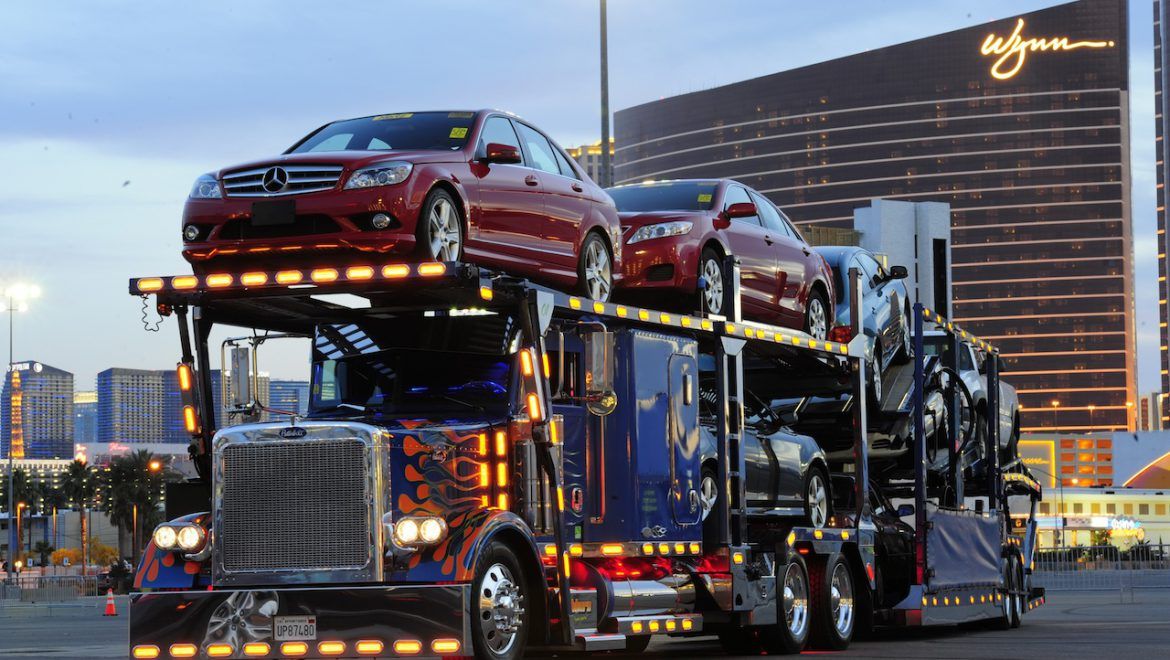Autos & Vehicles
Mixed Signals: Used Car Market Cools, But Bargain Seekers Face Tough Times in 2023!

In 2023, the used car market is experiencing a mixed bag of signals. On one hand, there is a cooling effect with prices stabilizing or even decreasing in some cases. On the other hand, bargain seekers are facing tough times as finding truly great deals becomes increasingly challenging. If you’re in the market for a used car this year, it’s important to navigate these changing dynamics and adjust your expectations accordingly.
1. Cooling Prices, but Not Across the Board
While overall prices in the used car market are showing signs of cooling, it’s important to note that this trend is not uniform across all vehicle segments. Certain popular vehicle types, such as compact SUVs and pickup trucks, continue to hold their value well, with prices remaining relatively high. On the other hand, less in-demand vehicles, such as sedans and older model years, may see more significant price decreases. It’s essential to research specific makes, models, and regions to understand the price trends and market conditions that are relevant to your search.
2. Factors Driving the Cooling Effect
Several factors contribute to the cooling effect in the used car market. One significant factor is the increase in inventory as a result of a larger number of lease returns and trade-ins. As more people upgrade to newer vehicles, there is an influx of used cars entering the market. This increased supply puts downward pressure on prices, offering some relief to buyers. Additionally, the slowdown in demand due to economic uncertainties and shifting consumer preferences also contributes to the cooling effect.
3. Challenges for Bargain Seekers
Despite the overall cooling of prices, finding true bargains in the used car market has become more challenging. The increased demand for used cars, coupled with limited inventory for popular models, has created a competitive environment where sellers have less incentive to offer significant discounts. Moreover, the strong demand for specific vehicle types, such as fuel-efficient and reliable models, further diminishes the chances of stumbling upon exceptionally low-priced deals. Bargain seekers may need to exercise patience, expand their search radius, or consider alternative options such as certified pre-owned vehicles to find the best value for their money.
4. Importance of Research and Due Diligence
In a market where bargains are scarce, research and due diligence become even more crucial. Before making a purchase, it’s essential to thoroughly research the vehicle’s history, condition, and market value. Tools such as vehicle history reports and online marketplaces can provide valuable insights into a used car’s background and pricing. Additionally, scheduling a comprehensive pre-purchase inspection by a trusted mechanic can help identify any potential issues and ensure you’re making an informed decision.
5. Alternatives to Consider
If finding a bargain in the used car market proves to be challenging, there are alternative options worth considering. One such option is exploring certified pre-owned (CPO) programs offered by manufacturers. CPO vehicles undergo rigorous inspections and come with extended warranties, providing buyers with added peace of mind. While CPO vehicles may be priced higher than regular used cars, they often offer additional benefits and a higher level of quality assurance.
Conclusion
In 2023, the used car market is sending mixed signals. While prices are cooling overall, finding true bargains has become increasingly difficult. Bargain seekers face tough times as demand remains strong, supply increases, and certain vehicle segments retain their value. Navigating the used car market requires careful research, patience, and an understanding of the market dynamics specific to the vehicles you’re interested in. Consider alternative options like certified pre-owned vehicles to increase your chances of finding a reliable and well-priced used car. With diligence and informed decision-making, you can still find a vehicle that meets your needs and provides good value in today’s evolving used car market.
Autos & Vehicles
Car Shipping New York: Reliable Vehicle Transport Services

Introduction
Whether you’re moving to New York, buying a car from out of state, or simply need to transport your vehicle for another reason, choosing the right car shipping service is essential. New York, being a hub for business, tourism, and a diverse population, sees many people needing reliable vehicle transport options. Whether you are in New York City, the Hudson Valley, or somewhere in between, there are various car shipping companies offering solutions to meet your needs.
In this article, we’ll dive deep into the world of car shipping in New York, providing you with valuable insights into the process, the best companies to consider, and how to choose the right service for your vehicle’s journey.
Why Choose Car Shipping in New York?
Car shipping in New York is a highly sought-after service, especially given the state’s dense population and busy transport network. There are several reasons why people opt to ship their cars instead of driving them.
- Time-Saving: Shipping your car can save you time, especially if you are moving a long distance or need to transport multiple vehicles. Instead of spending days on the road, you can have your car delivered while you handle other tasks.
- Convenience: Car shipping services offer door-to-door delivery, meaning they pick up your vehicle at one location and deliver it directly to your destination. This removes the hassle of driving long distances or worrying about finding parking along the way.
- Safety: Long-distance driving, especially through busy highways or mountainous terrains, can be tiring and stressful. With a professional car transport company, you avoid the risk of accidents or wear and tear on your vehicle.
- Moving to a New City: If you are relocating to New York for work or personal reasons, car shipping is a great way to ensure your car gets to your new home safely without the need for a cross-country road trip.
Types of Car Shipping Services Available in New York

Image by: Yandex.com
Car shipping services come in a variety of options, and it’s important to understand the differences to choose the best one for your needs.
1. Open-Air Shipping
Open-air shipping is one of the most common and cost-effective ways to transport a vehicle. Your car will be loaded onto an open trailer, exposed to the elements during its journey. While this option is cheaper, your car is more vulnerable to weather conditions and debris along the road.
Pros:
- Affordable
- Widely available
- Fast delivery
Cons:
- Exposure to the weather and road debris
- Slightly higher risk of damage
2. Enclosed Shipping
Enclosed shipping involves transporting your car inside a fully enclosed trailer. This method provides extra protection for your vehicle, making it ideal for luxury, vintage, or exotic cars that require special care.
Pros:
- Maximum protection from weather and road debris
- Better suited for high-value or sensitive vehicles
Cons:
- More expensive than open-air shipping
- Limited availability
3. Door-to-Door Shipping
This option allows you to have your car picked up directly from your home or office and delivered to your destination. It’s one of the most convenient services, especially for people who are too busy to drive their car to a shipping terminal.
Pros:
- Maximum convenience
- No need to transport the car to a terminal
Cons:
- Slightly more expensive
- May not be available in remote or difficult-to-reach locations
4. Terminal-to-Terminal Shipping
In terminal-to-terminal shipping, you drop off your car at a designated terminal, and it is picked up from another terminal at the destination. This method is more affordable, but it requires you to be flexible with pick-up and drop-off locations.
Pros:
- More affordable
- Suitable for those who can drive their car to a terminal
Cons:
- Less convenient
- May require extra effort to reach a terminal
How Much Does Car Shipping in New York Cost?
The cost of shipping a car in New York varies depending on several factors, including the distance, the type of vehicle, and the service chosen. Here are some general pricing factors to keep in mind:
- Distance: The further the distance between pick-up and drop-off, the higher the cost. Shipping within New York itself will typically cost less than transporting a vehicle across the country.
- Vehicle Type: Larger vehicles such as SUVs, trucks, or luxury cars may cost more to ship compared to standard sedans due to their size and weight.
- Service Type: Enclosed shipping services are more expensive than open-air shipping. Similarly, door-to-door service generally costs more than terminal-to-terminal shipping.
- Time of Year: The time of year can affect car shipping costs. Shipping rates may be higher during peak seasons, such as summer, when demand is higher.
- Additional Fees: Some car shipping companies may charge extra fees for things like insurance, expedited shipping, or delivery to hard-to-reach areas.
On average, you can expect to pay between $600 and $1,200 for car shipping in New York, depending on the specifics of your shipment.
How to Choose the Right Car Shipping Company in New York
With so many car shipping options available, it’s important to do your research to find the right company for your needs. Here are some key factors to consider when choosing a car shipping service in New York:
1. Reputation and Reviews
Look for car shipping companies that have a solid reputation and positive customer reviews. Companies that have been in the business for years and have a track record of customer satisfaction are generally a safer bet.
2. Insurance and Liability
Make sure the company offers adequate insurance to cover any potential damages during transit. It’s essential to confirm that the insurance policy includes liability coverage for any unforeseen incidents.
3. Licensing and Certification
Ensure the company is licensed and registered with the Department of Transportation (DOT). This ensures that they are operating legally and adhere to federal regulations.
4. Pricing Transparency
Be wary of companies that don’t provide clear and upfront pricing. Reliable car shipping companies will offer a detailed quote with all costs included, without hidden fees.
5. Customer Support
The availability of reliable customer service is critical, especially if you have questions or concerns during the shipping process. Choose a company with responsive support teams that are easy to reach.
The Car Shipping Process: What to Expect
Once you’ve selected your car shipping provider, it’s important to understand the typical steps involved in the process:
- Booking the Shipment: Contact the company to get a quote and book your car shipping service. Provide details such as your pick-up and drop-off locations, vehicle type, and preferred shipping method.
- Pick-Up: On the scheduled date, the shipping company will arrange to pick up your car. Ensure that your car is clean and free from personal items to avoid any damage or complications during transport.
- Transportation: Your vehicle will be securely loaded onto the shipping vehicle and transported to your destination. Depending on your chosen service, this could take anywhere from a few days to over a week.
- Delivery: Upon arrival, the company will deliver your car to the agreed location. Inspect the vehicle carefully for any damage, and ensure that the condition of your car is documented.
Conclusion
Choosing the right car shipping service is a crucial step in ensuring that your vehicle arrives safely and on time. With a wide range of reliable providers in New York offering various shipping options, you can find a solution that meets your needs and budget. Whether you’re moving, buying a car out of state, or simply need to transport your vehicle, car shipping can save you time, money, and hassle.
By understanding the process, considering your options, and working with reputable companies, you can enjoy a smooth and stress-free experience with car shipping in New York.
Autos & Vehicles
Find Cars for Sale in Zimbabwe Under $3 000 with UFS AUTO

Introduction
If you’re searching for cars for sale in Zimbabwe under $3 000, you’re not alone. For many Zimbabwean drivers, affordability is key — and that’s where UFS AUTO steps in. As a trusted name in Japanese vehicle imports, UFS AUTO connects local buyers to high-quality, budget-friendly cars that combine reliability, safety, and transparent pricing.
Owning a car no longer needs to be a luxury. Whether it’s for daily commuting, family errands, or delivery work, cars for sale in Zimbabwe under $3 000 offer the perfect entry point to mobility and independence.
Why $3 000 Is a Sweet Spot for Buyers
At the $3 000 mark, you’re not shopping for brand-new cars—but you’re not limited to unreliable clunkers either. This price range opens access to well-maintained used cars for sale in Zimbabwe, often imported from countries like Japan, Singapore, or the UK.
Here’s what typically defines cars in this budget range:
- Compact hatchbacks and sedans dominate think Toyota Vitz, Honda Fit, Nissan March, or Mazda Demio.
- Fuel efficiency takes priority over luxury features.
- Simple maintenance replacement parts are easily available in local markets.
This range is ideal for first-time buyers, students, or small-business owners looking for dependable mobility without excessive costs.
Best Budget Car Models to Consider
When narrowing down cars for sale in Zimbabwe under $3 000, some models consistently stand out for their reliability, affordability, and low running costs.
1. Toyota Vitz
- Why it’s popular: Compact, fuel-efficient, and widely available in spare parts.
- Ideal for: City commuting and short-distance travel.
2. Honda Fit
- Highlights: Smooth performance, stylish interior, and strong resale value.
- Bonus: Known for its longevity even beyond 200 000 km.
3. Nissan March
- Why buyers love it: Easy maintenance and excellent mileage.
- Best for: First-time car owners or student drivers.
4. Mazda Demio
- Perks: Agile handling, compact design, and minimal fuel consumption.
- Why it’s smart: A balanced choice for both city and highway use.
5. Toyota Corolla
- Why it’s reliable: Strong engine performance and simple repair process.
- Perfect for: Those who value durability over style.
While these prices vary depending on the year, condition, and mileage, each model represents a safe bet for budget buyers exploring cars for sale in Zimbabwe today.
Where to Find Cars for Sale in Zimbabwe Under $3 000
Finding a good deal requires knowing where to look. Thankfully, Zimbabwe’s car market has diversified beyond traditional dealerships.
1. Local Car Dealers
Many local dealers specialize in used imports and have options below $3 000. Visiting in person allows you to inspect vehicles, negotiate, and review service histories before making a commitment.
2. Online Marketplaces
Websites like Car.co.zw, Classifieds.co.zw, and Facebook Marketplace feature extensive listings of cars for sale in Zimbabwe under $3 000.
Always verify authenticity—request vehicle inspection reports and compare similar listings to avoid overpaying.
3. Direct Imports
Some buyers choose to import directly, especially from Japan. Trusted exporters of Japan used cars for sell often list vehicles within this price range.
However, remember to factor in shipping costs, import duties, and registration fees, which can add 30–40 % to the base price.
Understanding Total Cost of Ownership
When buying cars for sale in Zimbabwe under $3 000, your expenses don’t stop at the purchase price. Consider ongoing costs such as fuel, maintenance, and legal paperwork.
- Vehicle registration and insurance: Mandatory in Zimbabwe and may cost a few hundred dollars.
- ZINARA vehicle license fees: Annual payments based on engine capacity.
- Maintenance and repairs: Budget around $300–$500 annually for basic upkeep.
- Fuel efficiency: Prioritize models that deliver 14–18 km/litre to keep fuel costs manageable.
Even at the $3 000 mark, planning for these add-on costs ensures your car remains affordable in the long run.
Red Flags to Watch When Buying Cheap Cars
The low price of cars for sale in Zimbabwe under $3 000 can sometimes hide serious issues. Be wary of:
- Odometer fraud (mileage tampering)
- Unverified imports without clearance certificates
- Flood-damaged cars disguised with fresh paint jobs
- Incomplete paperwork or unpaid ZIMRA duties
It’s wise to bring along a trusted mechanic for inspection and confirm the car’s VIN and registration through official channels.
How to Negotiate the Best Price
Negotiation isn’t just about haggling—it’s about being informed. Here are quick tips for buyers looking to secure the best possible deal on cars for sale in Zimbabwe under $3 000:
- Do your research: Check at least 3–4 listings for similar models.
- Inspect in daylight: Look for signs of rust, repainting, or uneven bodywork.
- Ask for service records: A documented maintenance history increases trust.
- Use cash leverage: Sellers often offer small discounts for upfront payments.
Knowledge and patience often save you hundreds of dollars.
The Role of Japanese Used Cars
Many of the cars for sale in Zimbabwe under $3 000 originally come from Japan. The country’s export market has earned trust for quality, detailed inspection, and fair pricing.
Japanese models such as Toyota, Nissan, and Mazda remain the backbone of the budget car market, prized for their longevity and availability of spare parts.
If importing, always rely on verified exporters who provide:
- Inspection certificates
- Detailed photo documentation
- Transparent auction sheets
This minimizes risk while maximizing value.
Future Outlook: Will Cars Under $3 000 Stay Available?
Due to changing import tariffs and currency fluctuations, the supply of cars for sale in Zimbabwe under $3 000 may gradually tighten. However, with constant vehicle turnover and growing import options, affordable cars will remain available especially if you buy smart and act quickly.
Dealers are also introducing flexible payment plans, making it easier for buyers with modest savings to own vehicles without large upfront payments.
Final Thoughts
Buying cars for sale in Zimbabwe under $3 000 isn’t just about affordability it’s about making a confident, informed decision.
With clear expectations, proper inspection, and a realistic budget, you can find a dependable vehicle that fits your lifestyle without breaking the bank.
Whether you choose a locally-sold Toyota Vitz or import a Honda Fit from Japan, remember: smart buyers focus not just on price but on long-term value, safety, and maintenance.
Autos & Vehicles
Explore Trusted Japanese Vehicles for Sale with UFS AUTO

Introduction
Finding reliable Japanese vehicles for sale can be challenging, especially for individual buyers seeking quality without overspending. UFS AUTO simplifies this process by offering a curated selection of high-quality Japanese cars, backed by years of experience in exports and trusted customer service. Whether you are looking for compact cars, SUVs, or family vehicles, UFS AUTO ensures that every car meets rigorous standards before reaching your hands.
By leveraging direct access to Japanese auctions and suppliers, UFS AUTO offers a seamless buying experience that prioritizes transparency, affordability, and long-term reliability. Buyers across Africa can confidently choose Japanese vehicles for sale from UFS AUTO knowing that each purchase comes with verified inspection reports, detailed condition assessments, and full documentation.
Why Japanese Vehicles for Sale Are in High Demand
Japanese cars are known around the world for being dependable, fuel-efficient, and easy to maintain. Here’s why so many people choose them:
- Very Reliable: They last a long time and perform well, even after years of driving.
- Great Fuel Efficiency: Many models use less fuel, which helps save money and is better for the environment.
- Low Maintenance Costs: Spare parts are easy to find and affordable, so repairs are simple and budget-friendly.
- High Resale Value: These cars keep their value well, making them a smart long-term investment.
With UFS AUTO, you get all these benefits—without the usual worries of importing a car from overseas.
How UFS AUTO Ensures Quality in Every Vehicle
When searching for Japanese vehicles for sale, buyers need assurance that the cars are in excellent condition. UFS AUTO guarantees this through a detailed inspection and verification process:
- Comprehensive Vehicle Checks: Each car is inspected for engine performance, chassis condition, mileage verification, and overall functionality.
- Auction Verification: UFS AUTO works with licensed Japanese auction houses to source vehicles that meet their strict quality criteria.
- Transparent Reporting: Buyers receive high-resolution images and condition reports that outline every detail of the car before purchase.
- Customer Guidance: The UFS AUTO team assists in evaluating the best options, providing advice on suitability for local roads and driving conditions.
This attention to detail ensures that every Japanese vehicle for sale is reliable and meets the high expectations of individual buyers.
A Simple Process to Buy Japanese Vehicles for Sale with UFS AUTO
Buying a Japanese vehicle for sale through UFS AUTO is designed to be easy and stress-free:
- Step 1: Browse Listings: Explore a wide variety of vehicles, sorted by type, model, year, and price.
- Step 2: Review Reports: Examine detailed inspection documents and condition sheets for selected vehicles.
- Step 3: Confirm Purchase: Reserve or buy the vehicle directly through UFS AUTO’s secure platform.
- Step 4: Shipping & Documentation: UFS AUTO manages export procedures, shipping logistics, and customs paperwork.
- Step 5: Delivery & Support: Receive your vehicle at your preferred port or location, with support for registration and after-sales advice.
This process ensures that buyers can confidently purchase Japanese vehicles for sale without worrying about hidden issues or complicated import procedures.
Popular Models of Japanese Vehicles for Sale
UFS AUTO offers a variety of vehicles suited to different needs. The most sought-after Japanese vehicles for sale include:
- Toyota Corolla: Reliable, fuel-efficient, and perfect for city commuting.
- Honda Fit/Jazz: Compact, stylish, and highly economical.
- Nissan X-Trail: SUV option for family use and off-road versatility.
- Toyota Hilux: Durable truck for business and utility purposes.
- Mazda Demio: Affordable and practical hatchback for everyday use.
Each model is selected to meet the unique requirements of buyers in different African markets. With UFS AUTO, individual buyers can access these models without the hassle of navigating complex import procedures.
Why UFS AUTO Stands Out Among Japanese Vehicle Suppliers
Choosing a supplier is critical when exploring Japanese vehicles for sale. UFS AUTO distinguishes itself through:
- Verified Sourcing: Vehicles are sourced from certified Japanese auctions and reputable suppliers.
- Transparency: Full inspection reports, auction sheets, and vehicle history are shared before purchase.
- Affordable Pricing: Direct access to auctions allows competitive pricing for buyers.
- Comprehensive Support: From purchase to delivery, UFS AUTO provides guidance and assistance at every stage.
- After-Sales Service: Buyers receive ongoing support for registration, maintenance, and spare parts availability.
These practices make UFS AUTO a trusted choice for individual buyers seeking Japanese vehicles for sale across Africa.
Affordable Options for Every Budget
UFS AUTO ensures that Japanese vehicles for sale are accessible to buyers with varying budgets. The platform features vehicles ranging from entry-level hatchbacks to premium SUVs. Buyers can select cars based on price, fuel efficiency, or intended use, ensuring that their investment aligns with personal needs and finances.
In addition, UFS AUTO helps calculate the total landed cost, including shipping, customs duties, and registration fees. This transparency allows buyers to plan effectively and avoid unexpected expenses.
Conclusion
The market for Japanese vehicles for sale continues to expand, driven by demand for affordable, reliable, and fuel-efficient cars. UFS AUTO stands as a leader in this space, offering verified vehicles, transparent processes, and excellent customer support.
For individual buyers looking for their next reliable car, UFS AUTO provides access to top-quality Japanese vehicles for sale, making the import process simple and risk-free. Visit UFS AUTO today to find the perfect vehicle for your needs and drive home with confidence.
-
Business2 years ago
Cybersecurity Consulting Company SequelNet Provides Critical IT Support Services to Medical Billing Firm, Medical Optimum
-
Business2 years ago
Team Communication Software Transforms Operations at Finance Innovate
-
Business2 years ago
Project Management Tool Transforms Long Island Business
-
Business2 years ago
How Alleviate Poverty Utilized IPPBX’s All-in-One Solution to Transform Lives in New York City
-
health2 years ago
Breast Cancer: The Imperative Role of Mammograms in Screening and Early Detection
-
Sports2 years ago
Unstoppable Collaboration: D.C.’s Citi Open and Silicon Valley Classic Unite to Propel Women’s Tennis to New Heights
-
Art /Entertainment3 years ago
Embracing Renewal: Sizdabedar Celebrations Unite Iranians in New York’s Eisenhower Park
-
Finance3 years ago
The Benefits of Starting a Side Hustle for Financial Freedom































